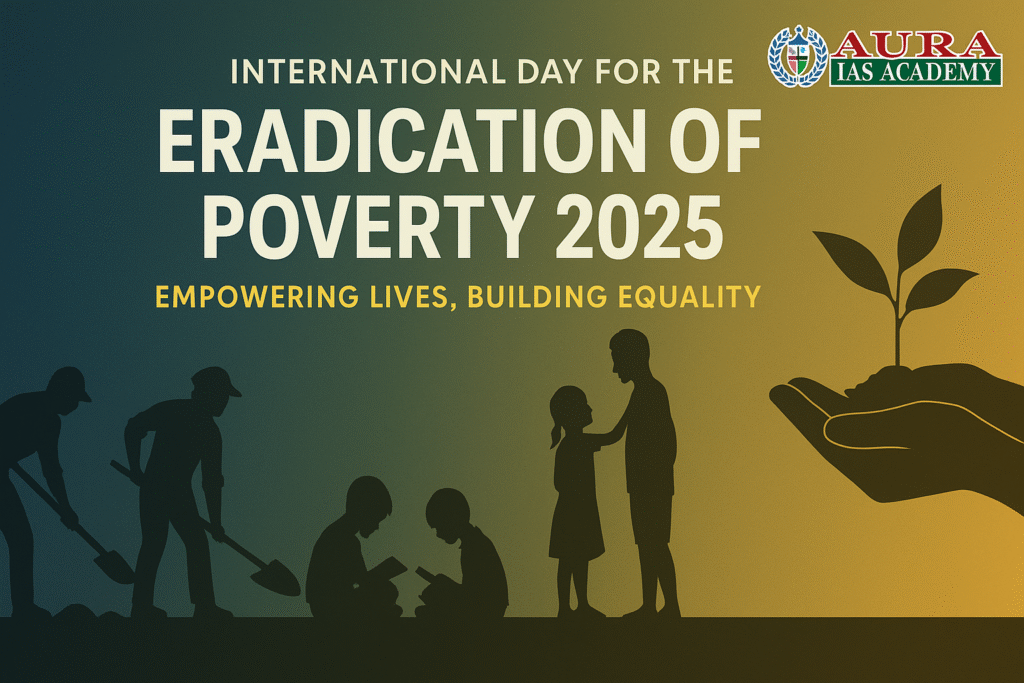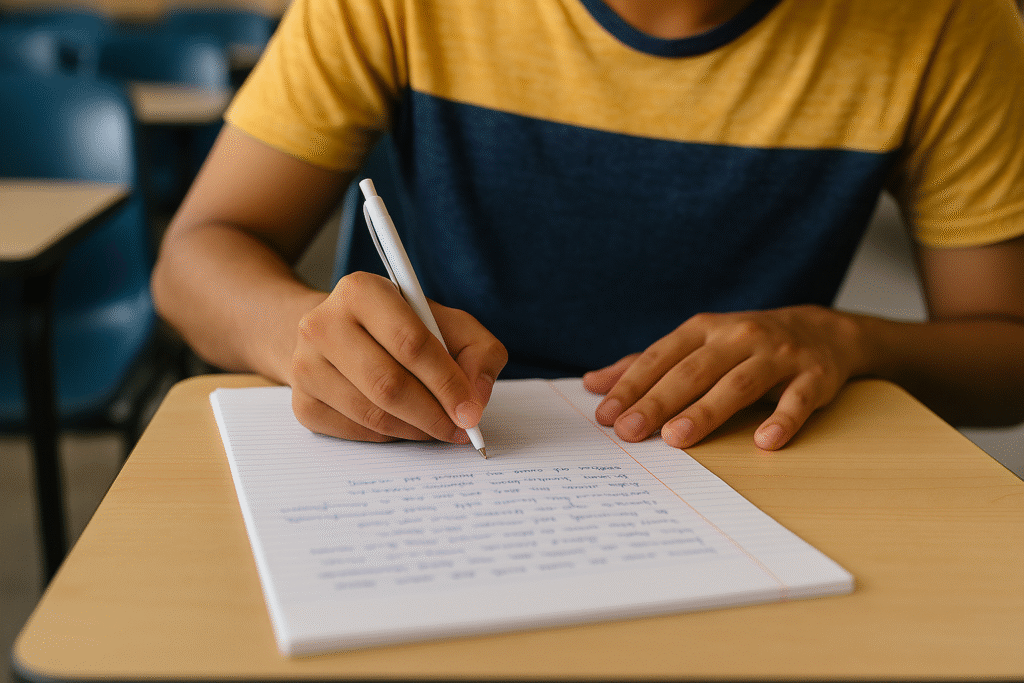International Day for the Eradication of Poverty 2025 – Empowering Lives, Building Equality

The International Day for the Eradication of Poverty, observed every year on 17th October, reaffirms the world’s collective commitment to eliminate poverty in all its forms and dimensions.
In 2025, as the world faces widening economic inequality, climate-driven displacement, and uneven access to technology, this observance reminds us that poverty is not inevitable — it is man-made and can be overcome through inclusive policies and social justice.
For UPSC aspirants, the topic links directly to GS Paper 2 (Governance, Welfare Schemes) and GS Paper 3 (Inclusive Growth, Employment & Developmental Issues).
Theme for 2025 – “Dignity for All: Ending Poverty through Social Justice and Sustainability”
This year’s theme emphasizes the intrinsic link between human dignity, equality, and opportunity. It highlights the need to go beyond temporary relief and focus on systemic transformation — empowering marginalized communities through education, livelihoods, and equitable access to resources.
Background
The day was first recognized by the United Nations General Assembly (UNGA) in 1992, inspired by the efforts of Father Joseph Wresinski, a French activist who dedicated his life to fighting extreme poverty.
The declaration calls upon all nations to:
Promote economic inclusion through fair access to opportunities.
Ensure social protection systems for the vulnerable.
Encourage partnerships between governments, civil society, and communities.
Poverty in India – The Current Scenario
India has made significant progress in reducing multidimensional poverty, but challenges remain.
According to the NITI Aayog’s National Multidimensional Poverty Index (2024):
Nearly 24.82 crore Indians exited poverty between 2013–14 and 2022–23.
Rural India saw faster poverty reduction, but urban inequality persists.
Major deprivations remain in nutrition, education, and sanitation access.
Key Government Initiatives for Poverty Alleviation
🇮🇳 Flagship Programmes:
Pradhan Mantri Awas Yojana (PMAY): Housing for all.
Mahatma Gandhi National Rural Employment Guarantee Act (MGNREGA): 100 days of guaranteed rural employment.
National Rural Livelihoods Mission (NRLM): Promoting self-help groups and women’s empowerment.
Pradhan Mantri Jan Dhan Yojana (PMJDY): Financial inclusion through bank accounts.
Ayushman Bharat: Health protection for vulnerable sections.
PM-KISAN & MSP reforms: Income support for farmers.
These programs align with SDG 1 – “No Poverty”, the first goal of the UN’s 2030 Agenda for Sustainable Development.
Global Perspective
Globally, nearly 700 million people still live in extreme poverty (less than $2.15 per day). The COVID-19 pandemic and climate shocks reversed years of progress, highlighting the fragility of global welfare systems.
The UN and World Bank advocate green, resilient, and inclusive growth as the path forward, focusing on:
🌍 Climate adaptation in poor regions
📚 Universal education and digital literacy
⚖️ Gender equality and decent work for all
UPSC Relevance
GS Paper 2: Welfare Schemes, Governance, Vulnerable Sections
GS Paper 3: Inclusive Growth, Poverty, and Employment
Essay Paper: Topics on social justice and development equity
Ethics Paper: Compassion, empathy, and duty towards marginalized communities
💡 UPSC Practice Question:
“Discuss the role of inclusive growth and targeted welfare programs in eradicating multidimensional poverty in India.”
Conclusion
The International Day for the Eradication of Poverty 2025 reminds us that ending poverty is not merely an economic mission — it is a moral and human imperative.
India’s vision of Sabka Saath, Sabka Vikas, Sabka Vishwas, Sabka Prayas embodies this spirit — ensuring that development reaches the last person standing (Antyodaya).
Poverty eradication is not charity; it is justice.
As Mahatma Gandhi said, “Poverty is the worst form of violence.”
📘 For UPSC Aspirants – Recommended Reading
Aura IAS GS Paper 2 & GS Paper 3 PYQs (2013–2025)
✔️ Topic-wise questions on welfare schemes, inclusive growth, and social justice
✔️ Detailed model answers with government reports and data
🛒 Get your copy now:
👉 https://auraias.in/shop/



